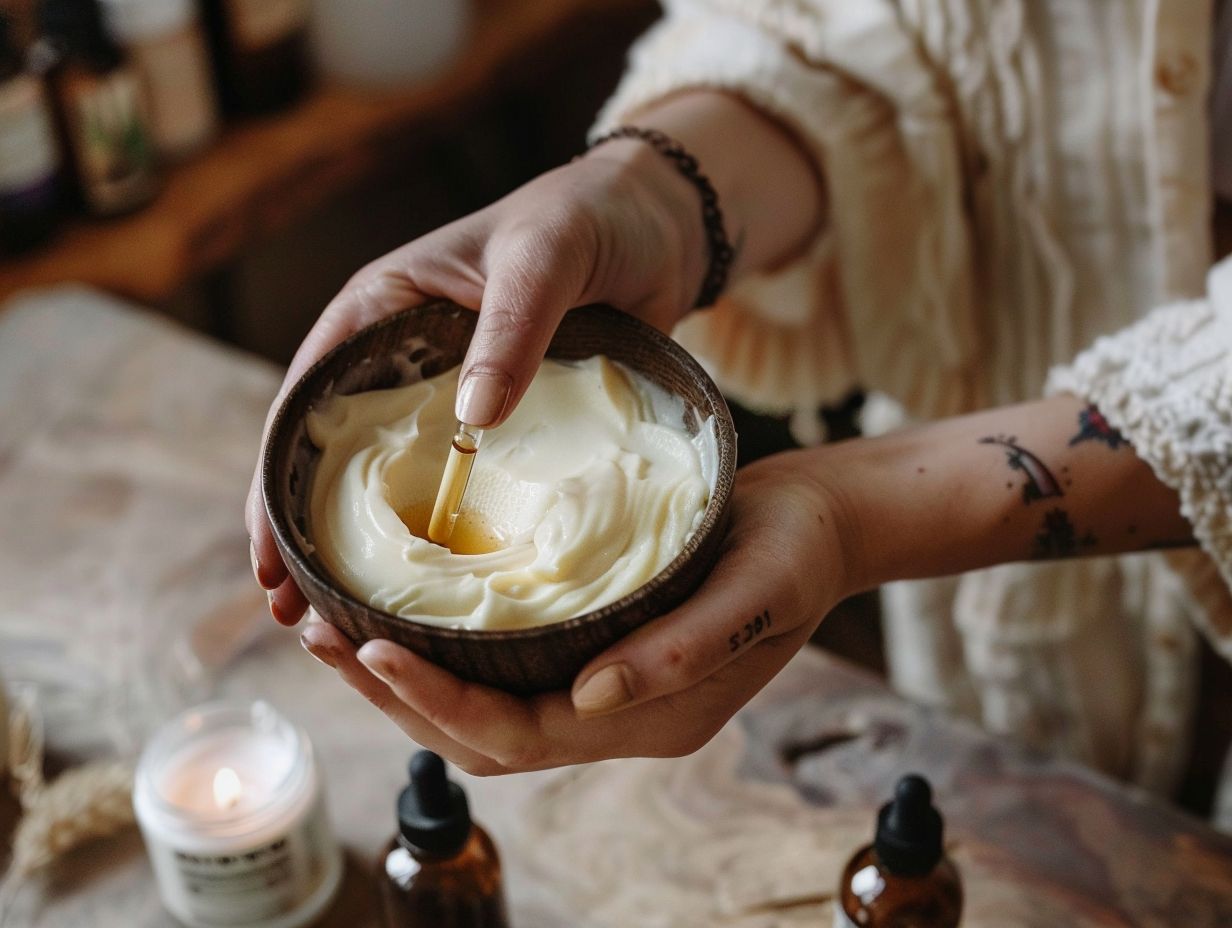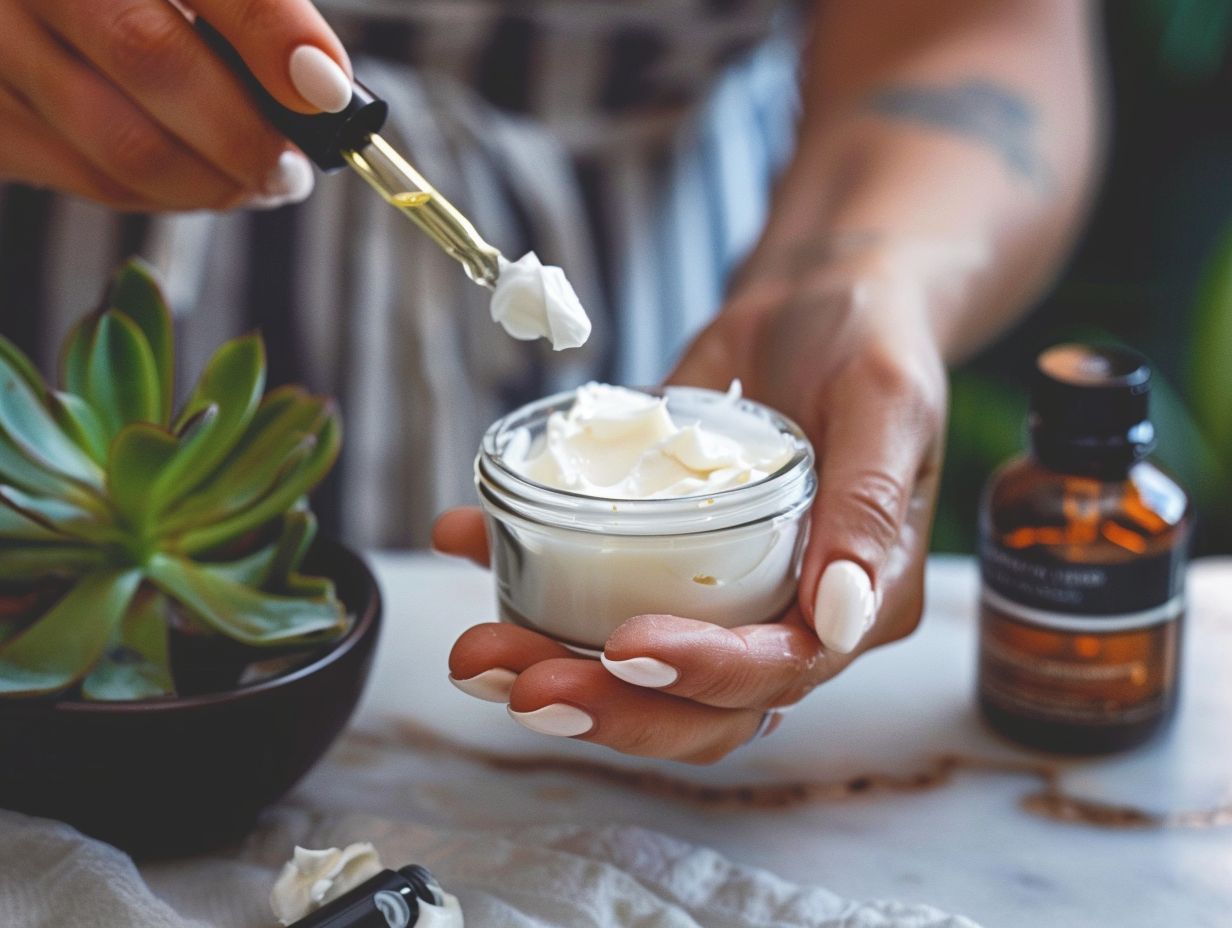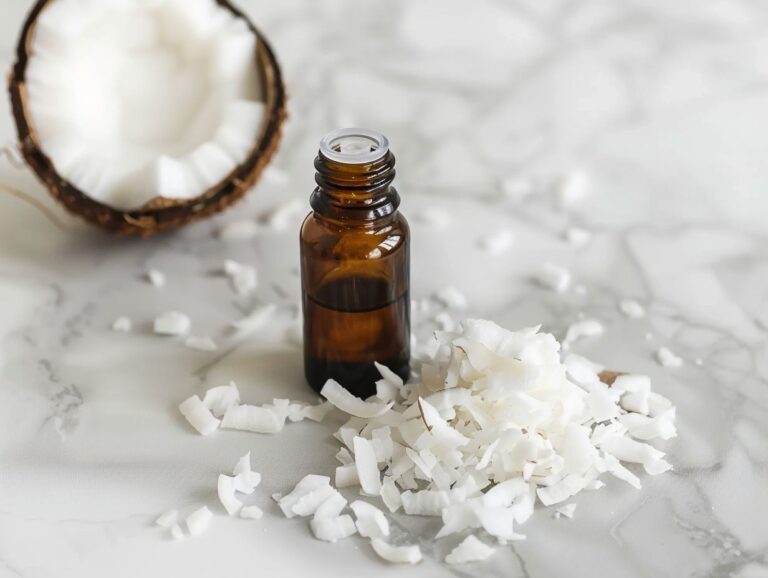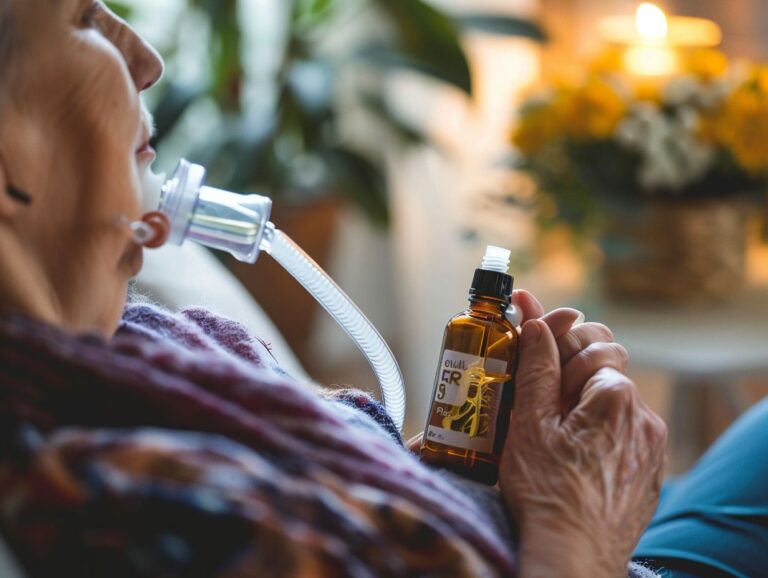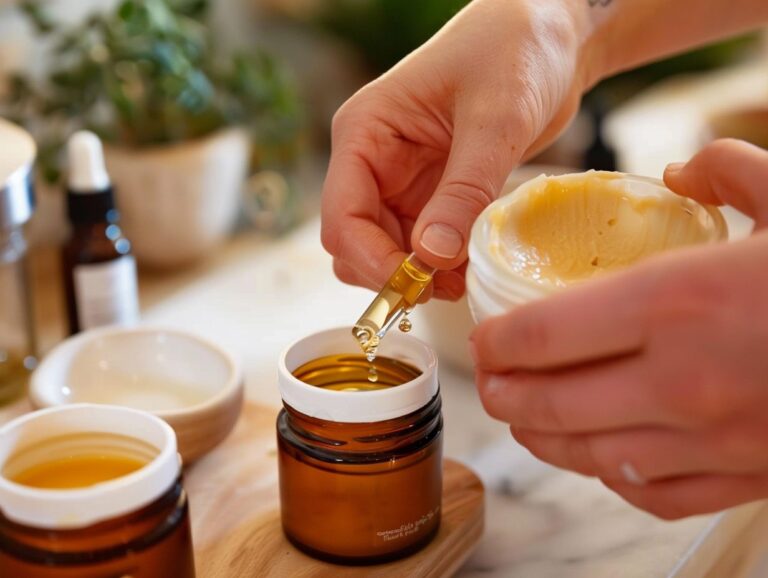Can I Mix Essential Oils With Face Cream
If you love skincare and natural remedies, you may have wondered about mixing essential oils with face cream. The combination can offer benefits such as enhanced skin nourishment and potential therapeutic effects.
Choosing the right essential oils, determining the appropriate dilution ratio, and following safety precautions are important.
In this article, we will explore the benefits, how to properly mix essential oils with face cream, and which essential oils to avoid. Let’s dive in and learn more about this skincare trend!
Key Takeaways:
What Are Essential Oils?
Essential oils are concentrated plant extracts that are used in a variety of beauty products and skin care formulations. These oils are prized for their natural benefits and are often customized by formulation experts to create unique products tailored to different skin types.
The origins of essential oils can be traced back to ancient civilizations such as Egypt, where they were used for various purposes including perfumery, medicinal benefits, and spiritual rituals. The extraction process of essential oils involves methods like steam distillation, cold pressing, or solvent extraction, ensuring the purest form of the oil is obtained.
These oils are highly versatile and can be found in skincare products like serums, moisturizers, and masks, due to their healing and rejuvenating properties. Blending essential oils effectively requires a deep understanding of each oil’s unique characteristics, as well as their synergies when combined.
Custom formulations using essential oils have gained popularity in the beauty industry, allowing skincare brands to create personalized products that address specific skin concerns. The shift towards natural ingredients in skincare products emphasizes the importance of using pure, organic extracts to nourish and protect the skin.
What Is Face Cream?
Face cream, also known as moisturizer, is a skincare product designed to hydrate and nourish the skin. It is formulated to suit different skin types and is a crucial part of a skincare routine to maintain skin health and provide essential vitamins for skin elasticity and hydration.
Choosing the right face cream is essential as it can address specific skin concerns such as dryness, oiliness, or aging. Regular use of a suitable face cream can help in retaining moisture, improving skin texture, and rejuvenating the skin’s appearance.
Face creams form a protective barrier that shields the skin from environmental aggressors and prevents water loss, which is vital for achieving a healthy complexion. By incorporating a face cream into your daily skincare regimen, you can achieve a glowing, smooth, and healthy-looking skin.
What Are the Benefits of Mixing Essential Oils with Face Cream?
Mixing essential oils with face cream offers a range of benefits for the skin. This combination enhances the formulation by introducing potent natural ingredients that can penetrate the skin, providing targeted benefits for improved skin health and appearance.
One of the key advantages of incorporating essential oils into face cream is their ability to enhance skin penetration. Essential oils have small molecular sizes that allow them to deeply penetrate the skin layers, delivering their beneficial properties effectively. This targeted approach can address specific skin concerns such as acne, aging, or hydration, depending on the chosen oils.
Essential oils like lavender, tea tree, and rosehip are known for their unique properties that cater to different skin needs. Lavender has calming and anti-inflammatory effects, tea tree is renowned for its antibacterial properties, while rosehip oil is rich in antioxidants and Vitamin C, helping in skin repair and brightening.
Enhanced Skin Nourishment
Enhanced skin nourishment is a significant benefit of mixing essential oils with face cream.
By infusing the cream with essential oils rich in vitamins and nutrients, the skin receives a boost of nourishment that promotes overall skin health and radiance.
This infusion of essential oils not only provides hydration and moisture to the skin but also delivers a potent dose of antioxidants like Vitamin E and Vitamin C. These antioxidants help combat free radicals, reduce signs of aging, and promote collagen production for firm and youthful skin.
Essential oils such as lavender, rosehip, and chamomile possess anti-inflammatory properties that soothe irritation, redness, and acne, further improving skin health.
Improved Skin Texture and Appearance
Improved skin texture and appearance are noticeable benefits of incorporating essential oils into face cream. This blend helps to enhance the skin’s natural glow, smoothness, and overall appearance, providing a healthy and radiant complexion.
By infusing face cream with a carefully selected combination of essential oils, such as lavender, rosehip, and tea tree oil, you can tackle specific skin concerns like acne, dryness, or uneven tone effectively. These oils possess potent properties that nourish, repair, and rejuvenate the skin cells, contributing to a more vibrant and youthful look.
The synergy between essential oils and face cream can boost collagen production, improve skin elasticity, and reduce signs of aging like fine lines and wrinkles. This dynamic duo not only moisturizes and hydrates the skin but also shields it against environmental aggressors, enhancing its resilience and radiance.
Increased Antioxidant Protection
Increased antioxidant protection is a key advantage of blending essential oils with face cream. These formulations help to protect the skin from environmental damage, improve skin elasticity, and maintain a healthy balance by combating free radicals.
Many essential oils such as lavender, rosemary, and tea tree are rich in antioxidants, which play a crucial role in shielding the skin from external aggressors like pollution and UV rays. By neutralizing free radicals, these oils help prevent premature aging and maintain the skin’s youthful appearance. The anti-inflammatory properties of essential oils can calm irritated skin and reduce redness, promoting a clearer complexion.
Potential Therapeutic Effects
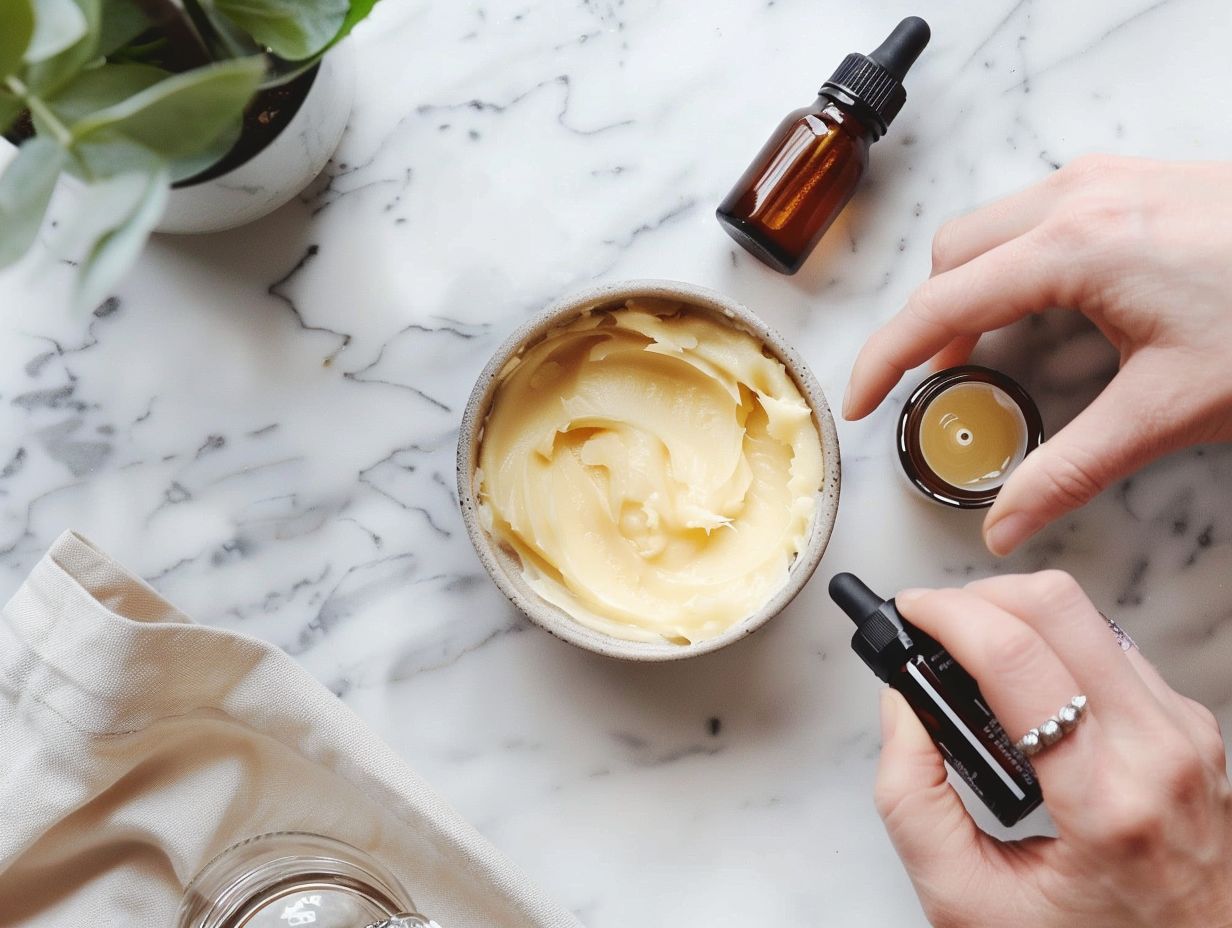
Essential oils such as lavender, tea tree, and chamomile are commonly used for their calming and anti-inflammatory properties in these infused face creams. When applied topically, these oils can help reduce redness, inflammation, and irritation, making them ideal for sensitive skin types.
The hydrating benefits of essential oil-infused face creams come from their ability to lock in moisture and improve the skin’s barrier function. This not only ensures adequate hydration but also helps in maintaining a youthful, plump appearance.
The holistic effects of these formulations extend to promoting overall skin health and well-being. Essential oils are known for their aromatherapeutic properties, which can uplift mood, reduce stress levels, and even improve sleep quality.
How to Properly Mix Essential Oils with Face Cream?
Properly mixing essential oils with face cream requires attention to detail and understanding of formulations. It involves blending the oils with carrier oils, creating emulsions, and ensuring a harmonious balance to achieve effective and shelf-stable custom products.
When incorporating essential oils into face creams, one essential factor to consider is the use of carrier oils. These oils play a crucial role in diluting the potent essential oils, ensuring they are safe for direct skin application. Techniques for blending involve carefully measuring each oil, considering their properties and desired effects. Achieving a stable emulsion is vital to prevent separation of the ingredients over time, enhancing product longevity. To create a well-balanced final product, meticulous attention to the ratios and compatibility of ingredients is essential for optimal results.
Choose the Right Essential Oils
Selecting the right essential oils is crucial when mixing them with face cream. It involves identifying oils that complement each other’s benefits, suit the skin type, and align with the desired formulation goals to create effective custom products.
When choosing essential oils for face cream formulations, it’s vital to consider the skin type of the individual. For instance, individuals with sensitive skin may benefit from gentle oils like chamomile or lavender, while those with oily skin could find tea tree or geranium oils more suitable.
The desired benefits play a significant role in the selection process. If aiming for hydrating effects, oils like rosehip or jojoba can be excellent choices, whereas anti-inflammatory properties may lead to selecting oils such as frankincense or helichrysum.
Determine the Appropriate Dilution Ratio
Determining the appropriate dilution ratio is essential for mixing essential oils with face cream. This step ensures that the oils are properly dispersed, prevent skin sensitivity issues, and maximize skin penetration while maintaining the desired scent profile.
One common dilution method is to use a carrier oil such as jojoba or sweet almond oil to blend the essential oils before adding them to the face cream. This helps in evenly distributing the oils and reducing the risk of skin irritation.
When choosing a face cream for dilution, opt for unscented lotions to avoid clashing fragrances and potential allergic reactions. This also allows you to control the final scent by adjusting the essential oil concentration.
To enhance skin penetration, consider adding a natural emulsifier like beeswax or vegetable glycerin to the mixture. These help the oils penetrate deeper into the skin, increasing their effectiveness.
Mix Thoroughly and Store Properly
Thoroughly mixing essential oils with face cream and storing the blend properly are essential steps for maintaining the product’s integrity and effectiveness.
When combining essential oils with face cream, it’s crucial to blend them evenly to ensure that each application provides consistent benefits to the skin. One method for achieving this uniform distribution is to gradually add the oils to the cream while stirring continuously. This process helps prevent clumping and encourages the oils to integrate smoothly with the cream base, enhancing their overall effectiveness.
Once the oils are well incorporated, storing the blend correctly is paramount to preserving its potency over time. Consider storing the mixture in a dark, airtight container to shield it from light and air exposure, both of which can degrade the oils and reduce their efficacy. Maintaining a stable temperature and avoiding extreme heat or cold can further extend the product’s shelf life and effectiveness in your daily skincare regimen.
What Are the Safety Precautions When Mixing Essential Oils with Face Cream?
When mixing essential oils with face cream, it is essential to observe safety precautions to prevent adverse reactions and ensure product efficacy. These precautions include conducting patch tests, avoiding sun exposure, maintaining proper dilution ratios, and seeking guidance from formulation experts when needed.
Conducting patch tests before incorporating essential oils into face cream is crucial to identify potential allergic reactions on a small area of skin before full application, minimizing the risk of irritation or sensitization. Moreover, ensuring sun protection after using products with certain essential oils is vital as these ingredients can increase photosensitivity, making the skin more prone to sun damage. Dilution guidelines must always be followed strictly to prevent skin irritation or other adverse effects, and consulting with formulation experts can help in creating bespoke blends tailored to specific skin needs.
Patch Test for Allergies
Conducting a patch test for allergies is a crucial safety precaution when mixing essential oils with face cream. This test helps identify potential allergic reactions or sensitivities before full application, ensuring skin safety and suitability for integrating the oils into a regular skincare routine.
Performing a patch test involves choosing a small, inconspicuous area of skin, like the inner forearm or behind the ear, for application. Mix a small amount of diluted essential oil with a carrier oil and apply it to the chosen patch of skin. Cover the area with a bandage or gauze and leave it on for 24-48 hours without washing or exposing it to water. After the designated time, remove the covering and observe the skin for any signs of redness, swelling, itching, or irritation.
If there are no adverse reactions, it is generally safe to proceed with using the essential oil in your face cream. If there is any discomfort or skin reaction, it is best to avoid incorporating that specific oil into your skincare regimen to prevent any potential allergic responses.
Avoid Sun Exposure
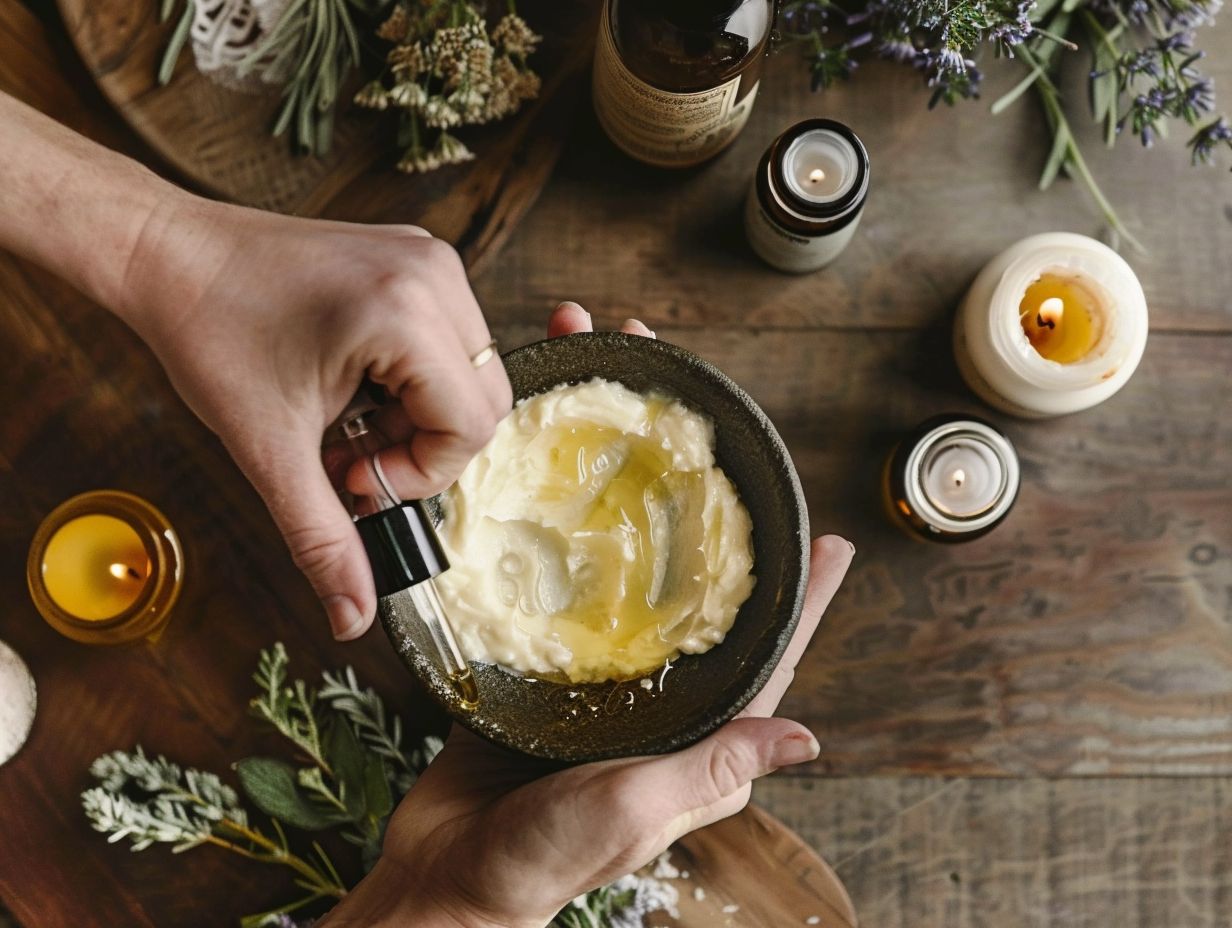
Exposure to the sun’s harmful UV rays can lead to increased sensitivity in skin areas where face creams with essential oils have been applied. This heightened sensitivity may result in redness, irritation, or even blistering. To mitigate these risks, incorporating a broad-spectrum sunscreen into your skincare routine can provide a protective barrier against UV radiation.
If you prefer a more natural approach, opting for unscented lotions that do not contain photosensitive ingredients can be a safer alternative. These lotions offer the benefits of hydration without the added risks of sun-induced skin reactions.
Use Proper Dilution Ratio
Ensuring the use of the proper dilution ratio when mixing essential oils with face cream is crucial for skin safety and product stability. Correct dilution ratios prevent skin irritation, promote shelf-stable formulations, and enhance the overall effectiveness of the blended products.
Proper dilution ratios play a significant role in preventing adverse skin reactions such as redness, burning, or itching that can occur when essential oils are concentrated. When essential oils are properly diluted in face creams, their therapeutic properties can be harnessed effectively without overwhelming the skin. Achieving the right dilution ratio involves measuring precise quantities of essential oils and carrier agents, ensuring a balanced blend that is gentle yet potent. Emulsions, which are mixtures of oil and water stabilized with emulsifiers, are essential in skincare formulations to bind different ingredients together, ensuring a homogenous texture and consistent application.
Consult a Professional
Seeking advice from a professional formulation expert is recommended when mixing essential oils with face cream. These experts can offer guidance on ingredient selection, formulation techniques, and personalized recommendations to create safe and effective custom products tailored to individual skincare needs.
One of the key benefits of consulting with formulation experts is their in-depth knowledge of essential oils and their compatibility with specific skin types. By leveraging their expertise, individuals can avoid potential allergens or irritants, ensuring that the final product is gentle and beneficial for the skin. These professionals understand the importance of proper blending ratios and can help achieve the desired scent profile without compromising the product’s performance.
Which Essential Oils Should You Avoid Mixing with Face Cream?
Certain essential oils should be avoided when mixing them with face cream to prevent adverse reactions or skin sensitivities. Oils like citrus oils, cinnamon oil, and peppermint oil have properties that may be too harsh for direct skin application and penetration, making them unsuitable for blending with face creams.
These oils are known to be phototoxic, which means they can cause skin irritation or sensitivity when exposed to sunlight. Citrus oils, such as bergamot or lemon, should be used with caution due to their high potential to cause skin reactions. Cinnamon oil, with its strong warming sensation, can be too aggressive for facial skin.
Instead of these oils, consider using gentle options like lavender, chamomile, or rose essential oils in your face cream blends. These oils are milder and less likely to cause adverse reactions, making them safer choices for skincare formulations.
Citrus Oils
Citrus oils are among the oils to avoid when mixing with face cream due to their high potential for skin irritation and photosensitivity. These oils can cause adverse reactions when exposed to sunlight and may not be suitable for direct application on the skin in face cream formulations.
Essential oils extracted from citrus fruits, such as lemon, lime, orange, and grapefruit, contain compounds that can make the skin more sensitive to UV rays, leading to increased risk of sunburn and skin damage. When incorporated into face creams, these oils can increase the likelihood of skin irritation, redness, and even burns, especially if the skin is exposed to sunlight after application.
It is essential to be cautious when formulating with citrus oils, ensuring that they are used in safe concentrations and preferably diluted with carrier oils to reduce the potential for adverse skin reactions.
Alternatively, consider using non-photosensitizing essential oils like lavender, chamomile, or rose in face cream formulations to achieve pleasant scents and potential skincare benefits without the same level of risk associated with citrus oils.
Cinnamon Oil
Cinnamon oil is a potent oil that should be avoided in face cream formulations due to its strong nature and potential skin irritations. This oil can be overly stimulating for the skin and may cause sensitivities, making it unsuitable for direct application in skincare products.
Instead of using cinnamon oil in face creams, opt for milder alternatives such as lavender oil or rosehip oil. Lavender oil is known for its calming properties and can help soothe skin irritations without the risk of sensitivity. Rosehip oil, on the other hand, is rich in antioxidants and vitamins, promoting skin regeneration and hydration.
Peppermint Oil
Peppermint oil is a stimulating oil that should be used with caution in face cream formulations. Its strong cooling effect can be too intense for sensitive skin, and direct application may lead to skin reactions or discomfort, requiring expertise from formulation professionals when considering its use.
When peppermint oil is included in face creams, it is important to remember that this essential oil is highly concentrated and potent. Due to its intense nature, improper use can cause skin irritation, redness, or a burning sensation. To avoid these risks, it is recommended to dilute peppermint oil properly before incorporating it into skincare products. Working with a trained aromatherapist or skin care expert can ensure the safe integration of peppermint oil into formulations tailored to specific skin types and conditions.
Frequently Asked Questions
Can I mix essential oils with face cream?
Yes, you can mix essential oils with face cream as long as you follow proper guidelines and dilution ratios.
What are the benefits of mixing essential oils with face cream?
When mixed correctly, essential oils can provide additional skin benefits such as hydration, anti-aging, and calming effects.
Are there any essential oils that should not be mixed with face cream?
There are some essential oils that are not safe for facial use and should not be mixed with face cream, such as cinnamon, clove, and lemongrass.
How much essential oil should I add to my face cream?
The general rule of thumb is to add 1-2 drops of essential oil per 1 ounce of face cream. However, this may vary depending on the strength of the essential oil and your individual sensitivity.
Can I mix essential oils with any type of face cream?
It is best to mix essential oils with natural, unscented face creams to avoid any potential adverse reactions or conflicts with other ingredients.
Should I do a patch test before using a face cream with essential oils?
Yes, it is always recommended to do a patch test before using any new product on your skin, especially if it contains essential oils. This will help determine if you have any allergies or sensitivities to the ingredients.

